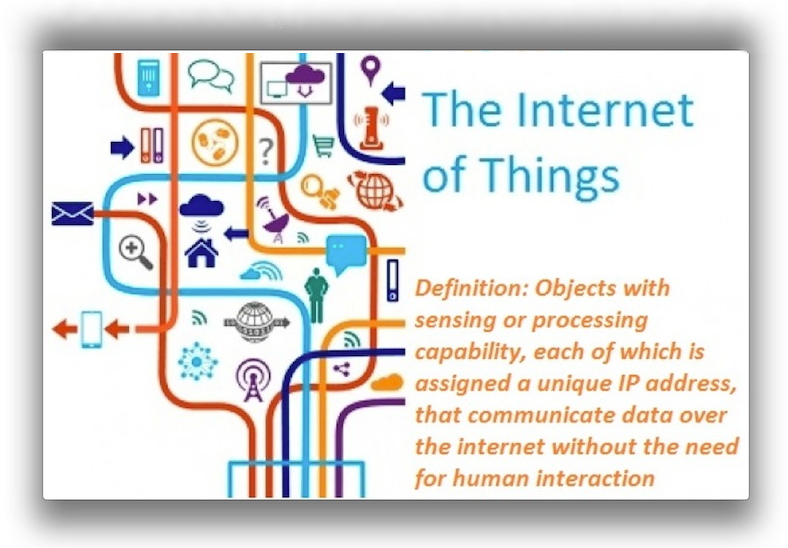How will businesses manage the IoT opportunity?
What’s driving the growth of the Internet of Things (IoT)? What are the current challenges in implementing IoT? And how does this phenomenon impact storage?
We’ve considered the IoT in different ways on these pages, from how it can impact daily life, to the role the cloud plays in powering it, and what’s at its core (data).
Nevertheless, the technology industry is still in discovery mode and companies are still figuring out use cases, the return on investment and the impact all this will have on storage consumption. Companies from different verticals — Google, Apple, Microsoft, and Samsung among the many — are trying to stake useful claims within homes and businesses with the help of networking and semiconductor companies like Cisco, Qualcomm, NVDIA, etc.
Any who manage to effectively execute the transitions involved could enjoy outsized impact on the technology landscape in the coming years. For these companies, it’s not just about connecting all our devices and making everything work seamlessly, it’s about becoming a crucial part of an ecosystem and using the data to potentially generate revenue for the companies.
IoT Growth Drivers
The concept of IoT is not new. Connected devices such as ATMs, airline check-in machines and card-operated door locks are all examples of IoT. In fact, the manufacturing industry has been implementing IoT for years now. So, what is really driving the mass adoption of IoT?
- New business models built around IoT: Emerging business models such as pay-as-you-drive (smart drive meter), smart waste bins and remote healthcare services are all examples of new business models built on IoT.
- Falling costs of connectivity and technology: Sensors or embedded “things” are the heart of IoT and price for sensors has been dropping significantly over the past few years. Broadband penetration has also increased allowing for better connectivity. Both these developments are allowing for IoT to be a reality.
- Increasing smartphone penetration and mobile app development platforms: Increased penetration of smartphones has made mobility easier and led to an app boom. This is giving IoT companies the ability to create apps that can function as the interface between the embedded device and other smart devices and allowing the exchange of data and analytics.
- Analytics applied to things: Companies are starting to realize the power of big data and the ability it has to radically transform their business and is one of the biggest driving factors.
- Faster computing power: Over the years, computing power has gotten faster and this is giving companies the ability to make instantaneous decisions by applying real-time analytics.
- Regulation: Regulation and legislation is pushing some categories of things into the mainstream. Examples include smart meters and many automotive functions. Intelligent lighting is another potential use case as governments encourage energy savings through light-emitting diode (LED) technology.
Current IoT Challenges
- Security & Privacy: Another big concern for consumers is security. With the recent hacks, consumers/companies are worried about potential misuse of their information. Privacy is also another huge concern among consumers. Security is a top hindrance to IoT growth.
- Lack of standards: Currently different devices operate on different platforms and this makes it challenging for multiple devices to communicate with each other. In order for mass adoption of IoT, companies need to collaborate and build devices/technologies that have the capability of speaking to one another.
- Data Ownership: Since there are a number of companies working together to create an IoT ecosystem, there is confusion in terms of data ownership. There are no clear boundaries in terms of data ownership – How much of data can be captured? Who owns this data? For instance, is it the device manufacturer? Or Operating System provider?
Impact on Storage Architecture
As companies start realizing the value that can be derived from IoT, they will also have to continue to reassess their storage architecture based on the workloads. The Internet of Things requires a more customized, scalable and cost-effective storage and the current solutions are insufficient to meet future demands. In general, IoT follows two basic architectures and it depends entirely on whether the edge systems communicate directly with a centralized IoT service platform or whether the edge systems communicate with a localized aggregation system that performs selected functions before exchanging information with the central platform
- More Customized Storage Solutions: Storage solutions will need to be more customized depending on an industries’/business’ core activities. For instance, some business models might require the analytics to happen in real-time. This requires an architecture with edge computing and having the remaining useful data pushed to the Cloud or on- or off-premise servers.
- Need for distributed storage solutions: IoT requires distributed storage solutions in order to manage data generated by different stages of the IoT data life cycle more effectively.
- Cloud infrastructure becomes more important: Increasing deployment of IoT across all data landscapes demands huge scalability and greater flexibility in large data centers supporting IoT infrastructure. Both the scale of in-house investments and the use of hosted cloud services will increase.
- More analytics requires hyperscale adoption: Hyperscale data centers will play an increasing role in IoT services, due to a growing requirements for analytics. Companies must consider diversifying their cloud management strategies, in many cases to emphasize partnerships with hyperscale data centers.
- IoT complexity demands smart IT: Enterprise and service provider networks will need to adopt new and evolving IoT-specific “smart IT” technologies to help manage the IT infrastructure and its assets, to ensure new, more complex IoT services remain stable and reliable as they scale.
https://payamava.net/بهینه-سازی-سایت-سئو-سایت/
https://payamava.net/طراØÛŒ-سایت-تهران/
https://payamava.net/طراØÛŒ-سایت-ØرÙÙ‡-ای/

